Hi Everyone,

I will continue my game theory series with prisoner’s dilemma. Prisoner’s dilemma is one of three famous games discussed in game theory. The other two games are battle of the sexes and chicken game. I will post blogs on these two games later in the series.
What is prisoner’s dilemma?
A prisoner’s dilemma game occurs when each player’s dominant strategy results in a less than optimal outcome for all players. Prisoner’s dilemma is typically expressed as a two-player game. The game is most commonly described as two people getting detained for a crime that they are suspected of committing together. The police do not have enough evidence to convict either suspect for the full extent of their alleged crimes. They need to get a confession from at least one of the suspects.

Note: this is not a real case or necessarily real life practice, it is just the story used to explain the meaning of prisoner’s dilemma.
The suspects are interviewed separately. The police will try and make a deal with each suspect. They will use tactics such as offering reduced sentences or even releasing them sooner from detention if there is a confession. The prisoner’s dilemma occurs when the suspects have a dominant strategy to confess. A dominant strategy exists when a particular course of action always yields a better result than any other course of action regardless of what the other people do.
For a prisoner’s dilemma, confession is the dominate strategy for both suspects. If a suspect confesses and the other does not, the police will let the confessor go and prosecute the other suspect to the maximum penalty. If a suspect does not confess and the other does not, the police will hold both suspects for as long as possible before releasing them. Confession gets the suspect off sooner.
If both suspects confess, the police will not prosecute both suspects to the maximum extent of the law. If a suspect does not confess and the other suspect confesses, the police will prosecute the suspect to the maximum penalty and let the other suspect off. Confession results in a shorter sentence. Confession results in a better outcome regardless of what the other suspect does.

We can analyse prisoner’s dilemma using a normal form game (normal form game is explained in the introduction to game theory post, the link to this post can be found at the end of this post). The matrix below contains likely detention time or prison sentences based on whether the suspects confessed or not. The suspect’s objective should be to minimize the amount of time spent in prison
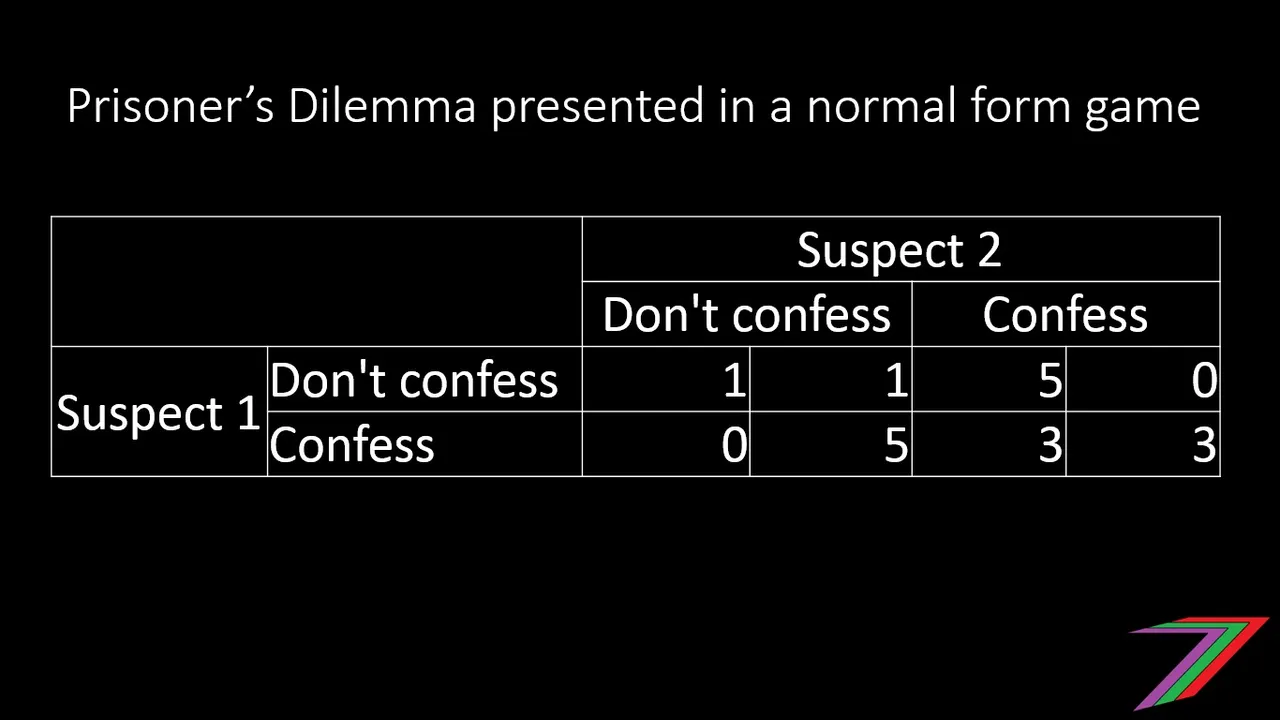
Based on using dominant strategies, both suspects can be expected to confess. If both suspects confess they are worse off than if neither suspect confessed. The suspects should have made a deal beforehand that neither of them will confess. Prisoner’s dilemma is explained in normal form using the tables below.
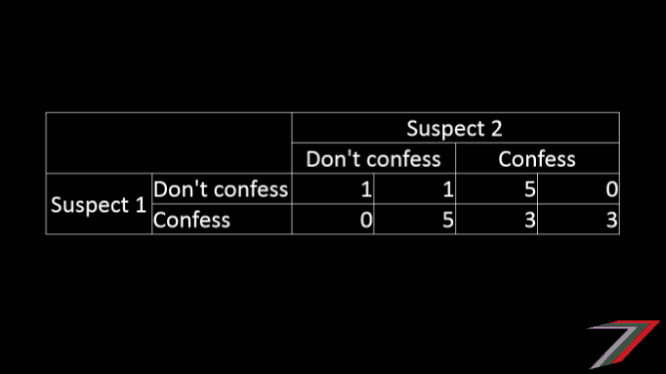
Real life application of Prisoner’s Dilemma
Prisoner’s dilemma has several real life applications. It is important to identify when prisoner’s dilemmas exist so that they can be avoided to achieve better outcomes through cooperation rather than harmful competition.

Marketing
Marketing is typically cited as a likely prisoner’s dilemma. Marketing is often the dominant strategy for firms. Marketing provides firms with an advantage over their competitors. Spending on marketing can draw more attention to a product and increase sales. If the market size is fixed, and firms invest equally into marketing, profits can be expected to be lower than if none of the firms had engaged in marketing. This can be demonstrated in the normal game below.
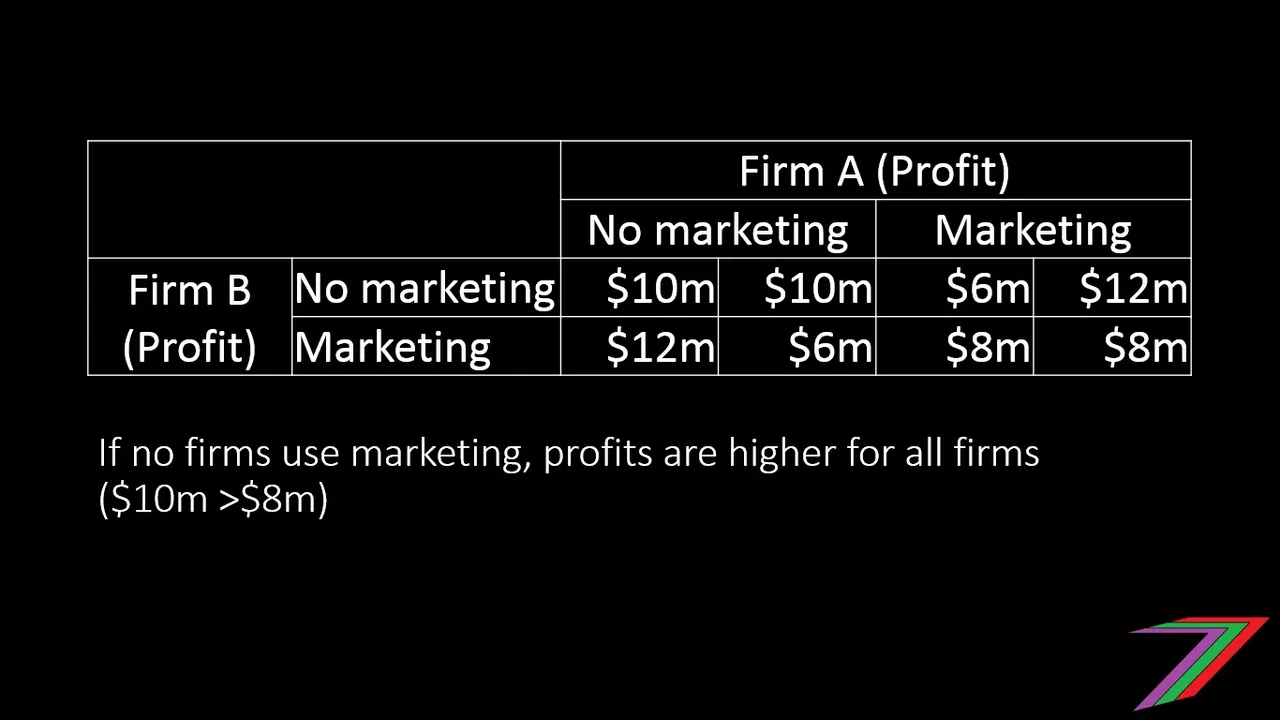
Marketing may not result in a prisoner’s dilemma if the market size is able to sufficiently grow to cover all marketing costs. If this is the case, marketing might actually benefit both firms. This can be demonstrated in the updated normal game below.
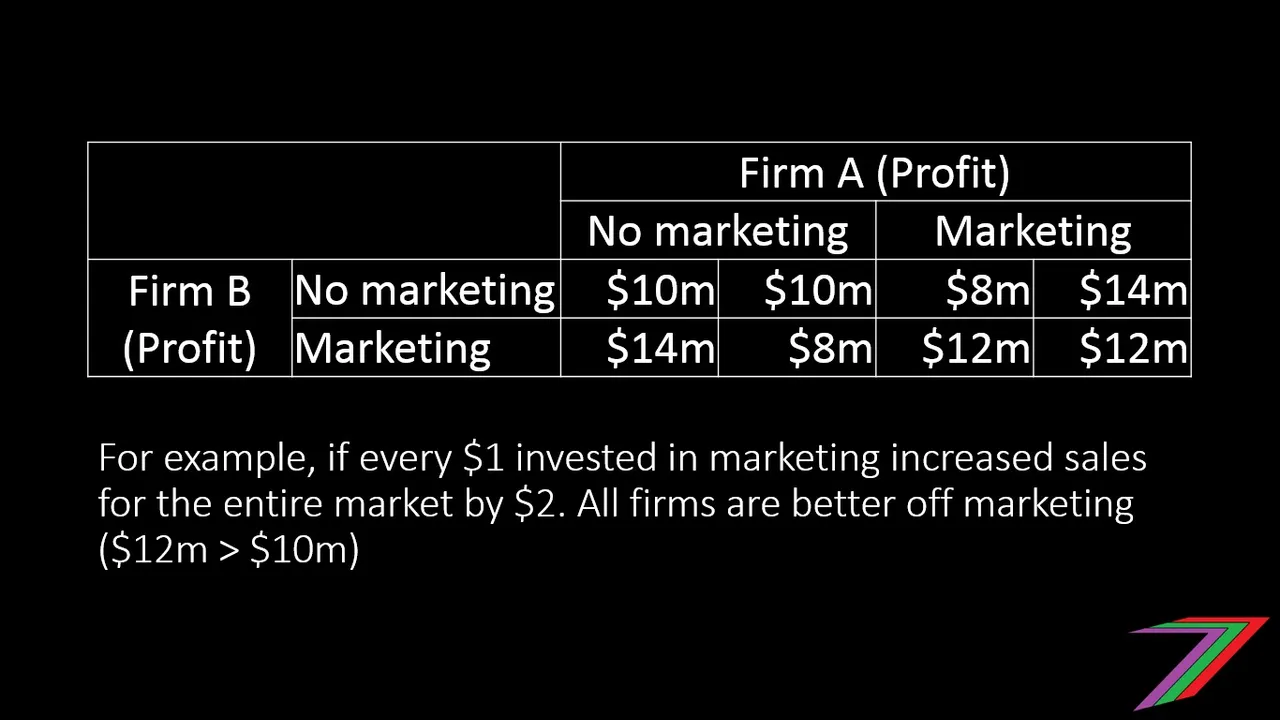
The prisoner’s dilemma game could be extended to include other markets and even customers. Marketing strategies that are more manipulative than informative could further exaggerate the problem of prisoner’s dilemma.
Possible Steemit bot prisoner’s dilemma
The use of Steemit bots could be a potential prisoner’s dilemma. The need to use Steemit bots increases as more people use Steemit bots. The use of Steemit bots allows upvoted posts to climb higher up the hot and trending lists. This also means that post that are not upvoted by bots will fall down the lists. If there are enough people using the bots, many posts will no longer have a chance of getting on the lists. This adds pressure for more people to use bots. Eventually, everyone who does not have a large following will need to use the bots for their posts to gain sufficient attention.
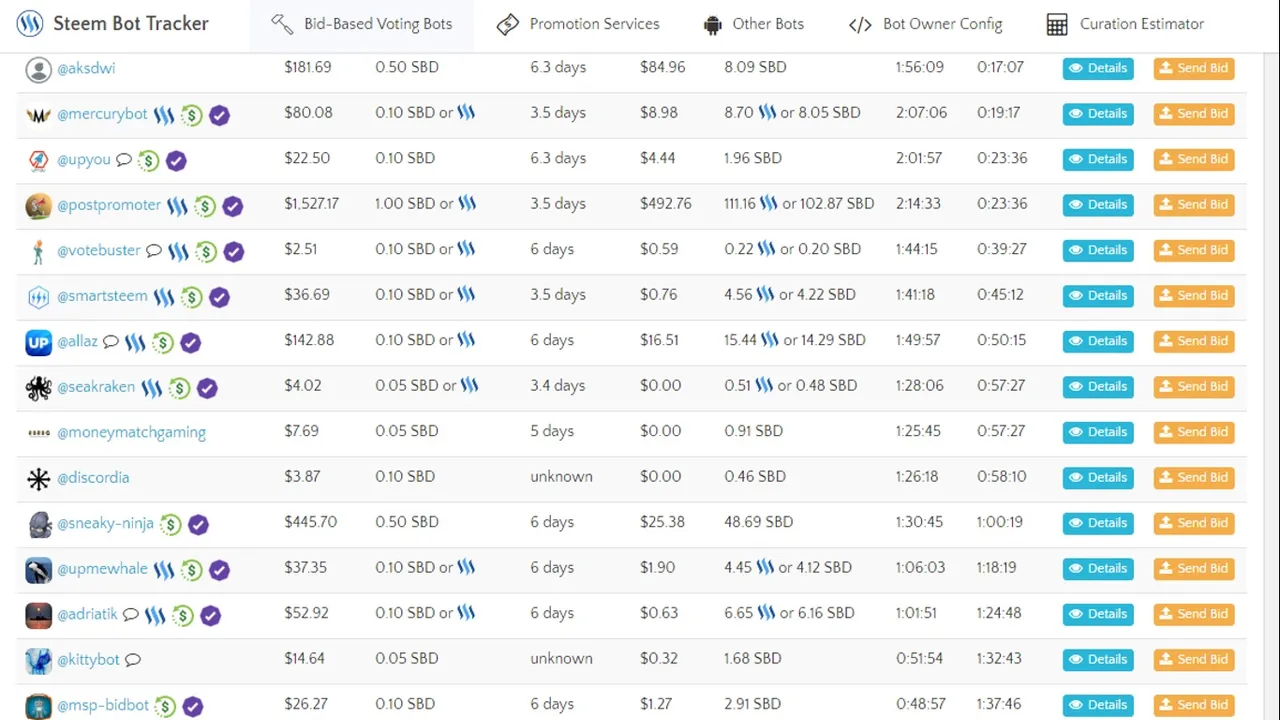
If bots did not exist, would everyone be better? Maybe, maybe not. It is not a straight forward question. Bots utilize voting power that might not be as fully utilized through manual voting or voting trails. Bots can also be used to promote lower quality posts that would not be voted for if all upvotes were manual rather than relying on bots.
I will investigate Steemit bots in relation to game theory in more detail in another post.
Conclusion
Prisoner’s dilemma is one of the more interested games to study. It has some identified real life application. It should also be considered a warning of the harm competition can cause when cooperation is a better alternative. This is not to say all competition is harmful but under certain circumstances it can be harmful and result in lost opportunities.
I hope you enjoyed this post. I will be covering the games battle of the sexes and chicken game in another post. I also will be looking at the real life application of game theory. What is the point of theory if it is not applied in the real world or can least explain activities in the real world?
For more information on game theory, you can access my introduction post using the link below:











